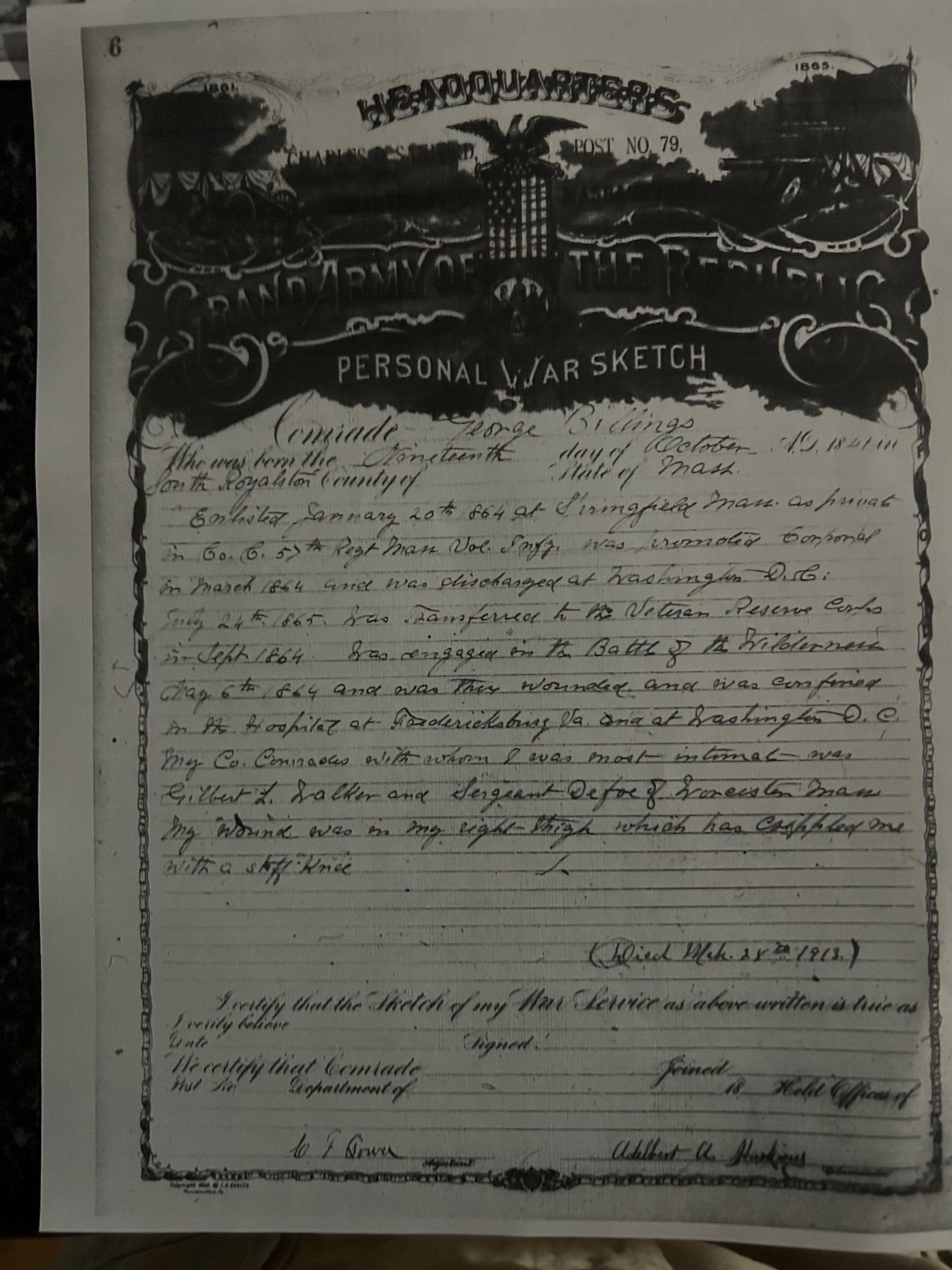
The Grand Army of the Republic (G.A.R.) was created just months after the end of America’s Civil War. It was a fraternal organization open to any honorably discharged Union soldier, sailor, or Marine who served during the Civil War years (1861-1865).
The organization was a strong advocate for veteran’s rights, a great social support and helped memorialize veteran’s sacrifices through education, parades, Memorial Day celebrations, and, most importantly, by the narratives veterans wrote describing their military service.
These narratives were written on a form called a Personal War Sketch. Many GAR posts encouraged the men to complete their “sketch.” These sketches were often recorded and retained by the Post Historian or Adjutant.
Most of the sketches were completed in the late 1800s and early 1900s, written in the soldiers’ own words, providing a wonderful historic narrative about their service. In some cases, post members completed sketches posthumously for friends who died in or after the War.
GAR members would often sit with the Post’s adjutant and complete the pre-printed questionnaire, or some cases dictate their personal accounting of service.
The format of the pre-printed sketches form included place and date of enlistment, their unit, battles participated in, wounds received, length of imprisonment (if applicable), and names of fellow soldiers. These personal accounts offer cherished first-hand information, providing great insights into the lives of those who served.

The North Adams, Massachusetts-Charles D. Sanford Post #79 recorded over ninety personal war sketches that now reside in the local library.
Some examples of the men’s personal comments are:
“..wounded in the Shenandoah Valley September 9th, 1864, by a minie ball on the cheek…”
“…. loss of speech and hearing occasioned by the bursting of a shell at the Battle of New Bern.”
“…taken prisoner…was confined to Libby prison at Richmond, Va…”
“…seriously injured when horse fell on [him]….”
“I was engaged at the Battle of the Wilderness May 5th, 1864, and was there wounded and was confined in the hospital at Fredericksburg, Va. And at Washington, D.C…my wound was in my right thigh which has crippled me with a stiff knee.”
“…the most important event was that I lived to get home.”
The Sketches are great narratives and insights of the War’s impact on soldier’s lives.
Image credit: North Adams Public Library